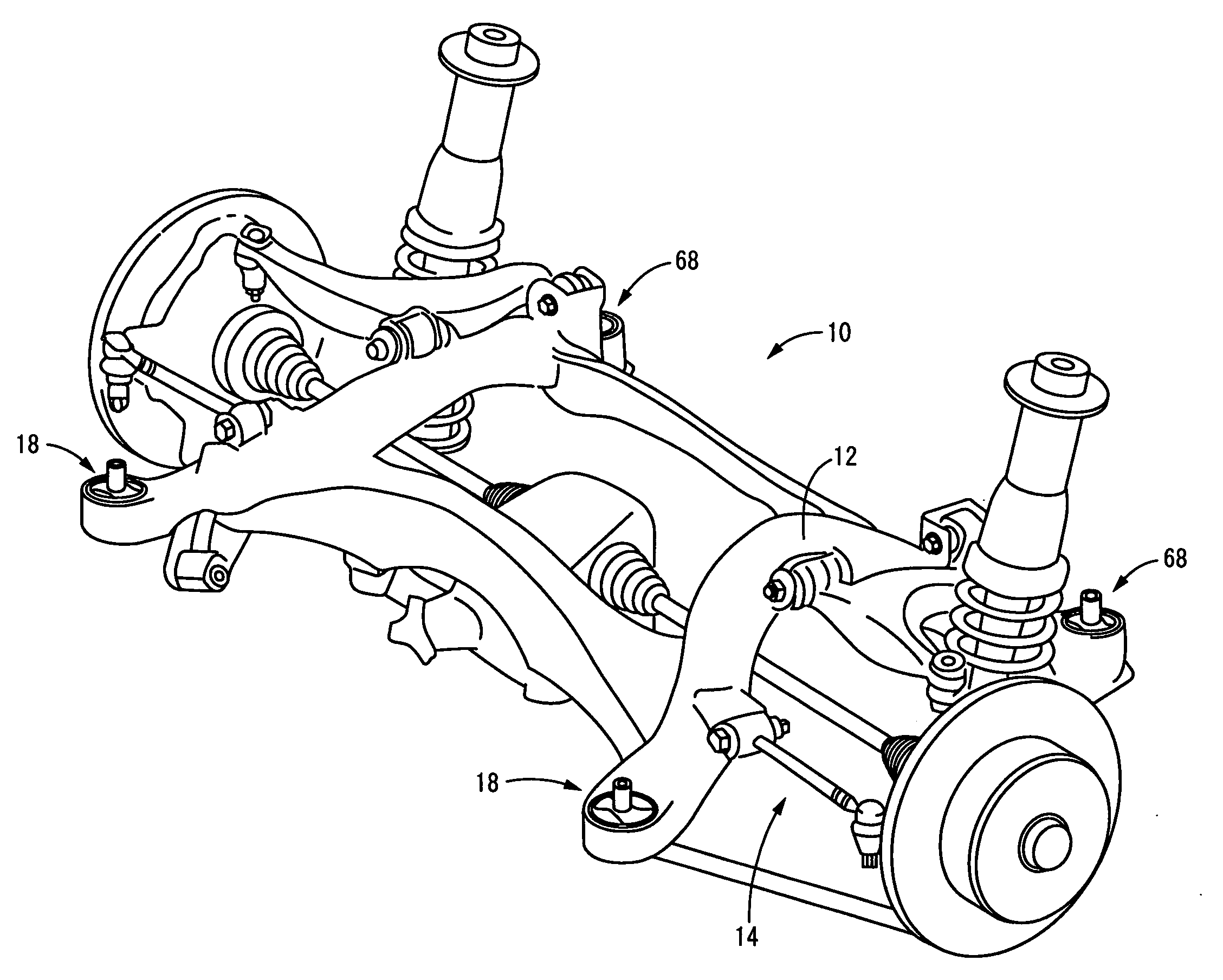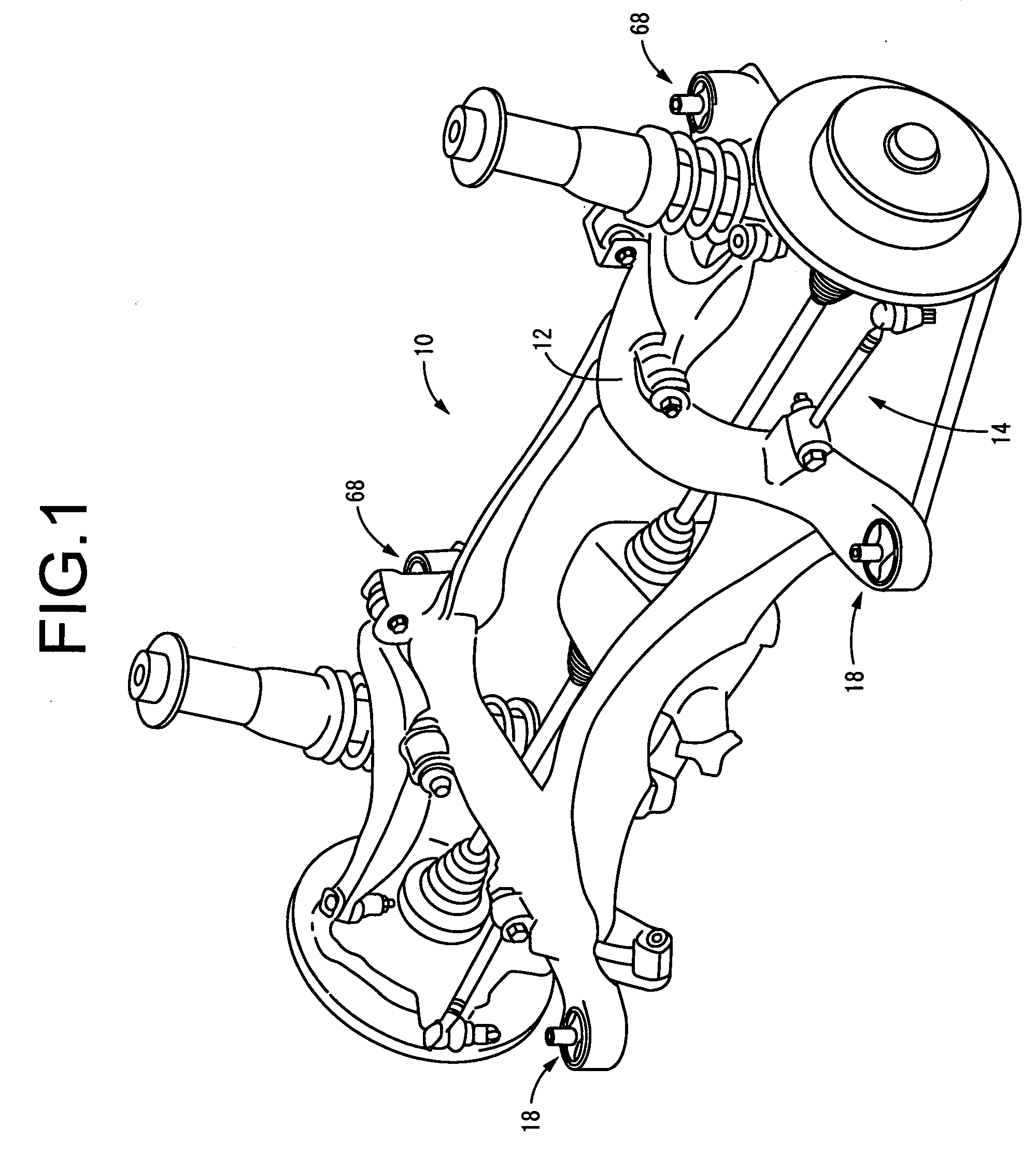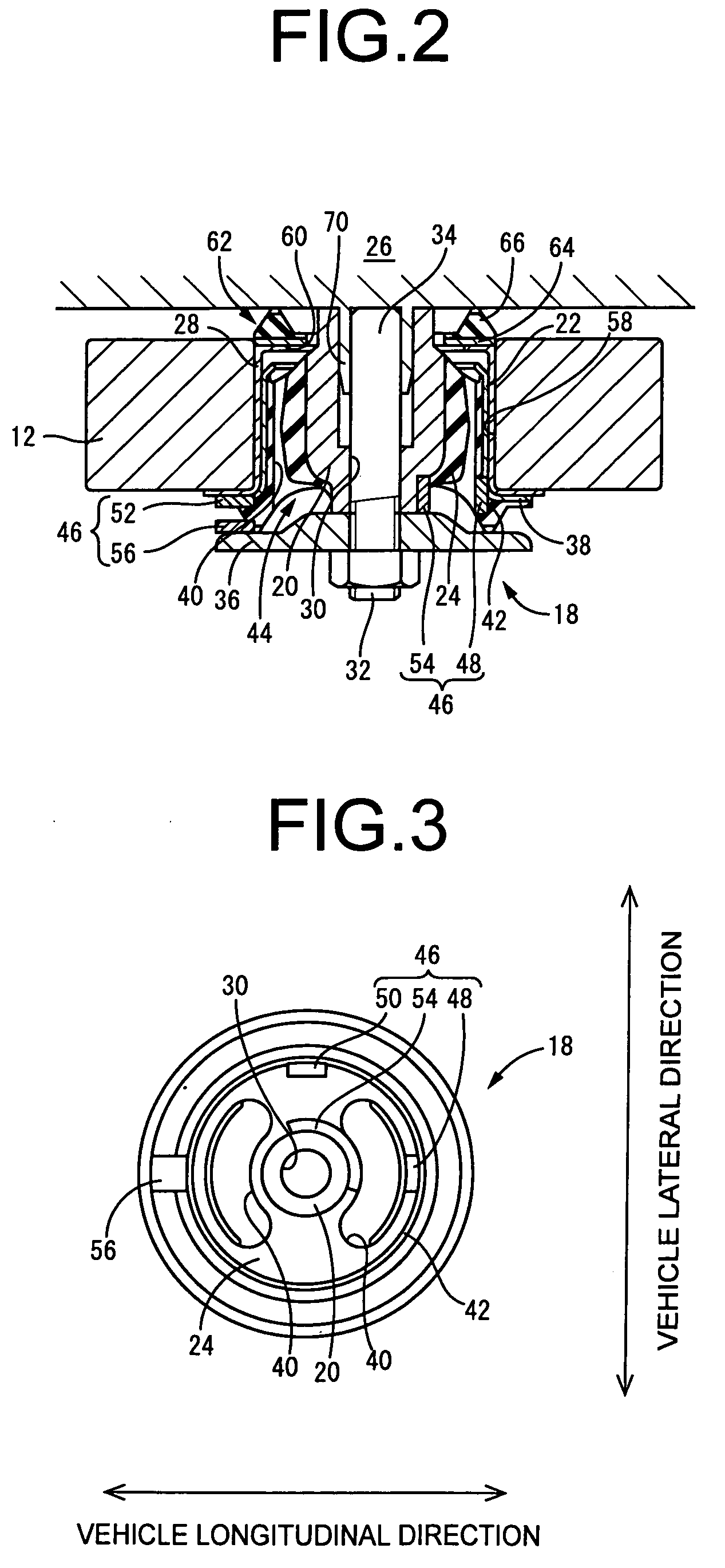Subframe structure and vibration damper for the same
- Summary
- Abstract
- Description
- Claims
- Application Information
AI Technical Summary
Benefits of technology
Problems solved by technology
Method used
Image
Examples
Embodiment Construction
[0041]FIG. 1 illustrates a subframe structure 10 of construction according to a first embodiment of the present invention. The subframe structure 10 comprises a subframe 12, through which a rod, a ring, an arm, and other suspension components 14 are held connected to a vehicle body of an automotive vehicle.
[0042] The subframe 12 is formed of a steel member having a high stiffness, and is a member that has, overall, an essentially rectangular frame member shape. The suspension components 14, which support each of the wheels 16, are attached to this subframe 12. The subframe 12 is also attached to the vehicle body through a plurality of rubber mounts, e.g., four subframe mounts 18, 18, 68, and 68 in the present form of embodiment.
[0043] As shown in FIGS. 2 and 3, this subframe mount 18 has a structure wherein a metallic inner sleeve 20 functioning as an inner rod member, and a metallic outer sleeve 22 functioning as an outer cylinder member, are connected elastically by a rubber ela...
PUM
 Login to View More
Login to View More Abstract
Description
Claims
Application Information
 Login to View More
Login to View More - R&D
- Intellectual Property
- Life Sciences
- Materials
- Tech Scout
- Unparalleled Data Quality
- Higher Quality Content
- 60% Fewer Hallucinations
Browse by: Latest US Patents, China's latest patents, Technical Efficacy Thesaurus, Application Domain, Technology Topic, Popular Technical Reports.
© 2025 PatSnap. All rights reserved.Legal|Privacy policy|Modern Slavery Act Transparency Statement|Sitemap|About US| Contact US: help@patsnap.com



